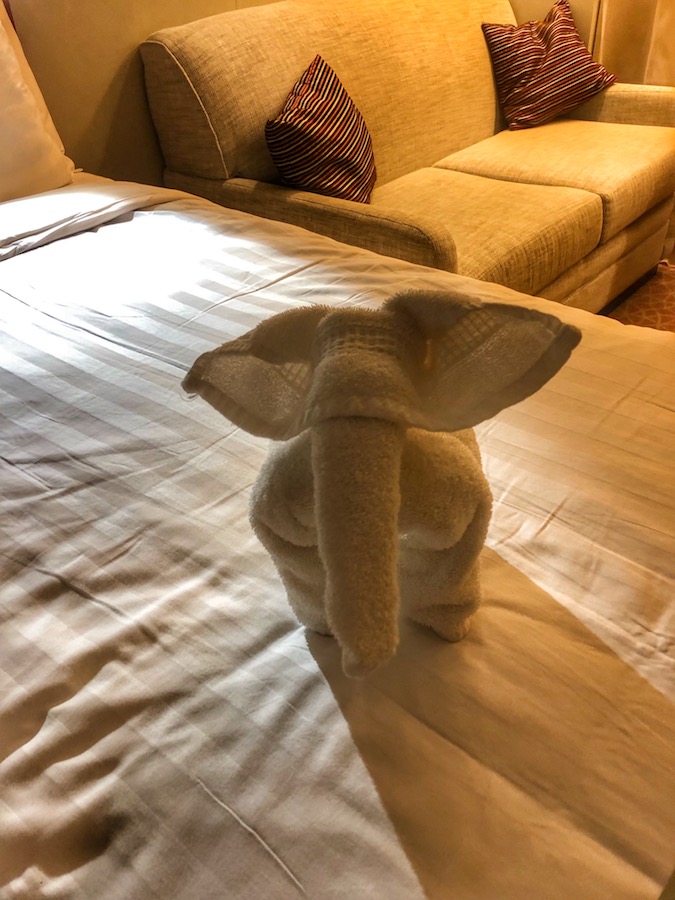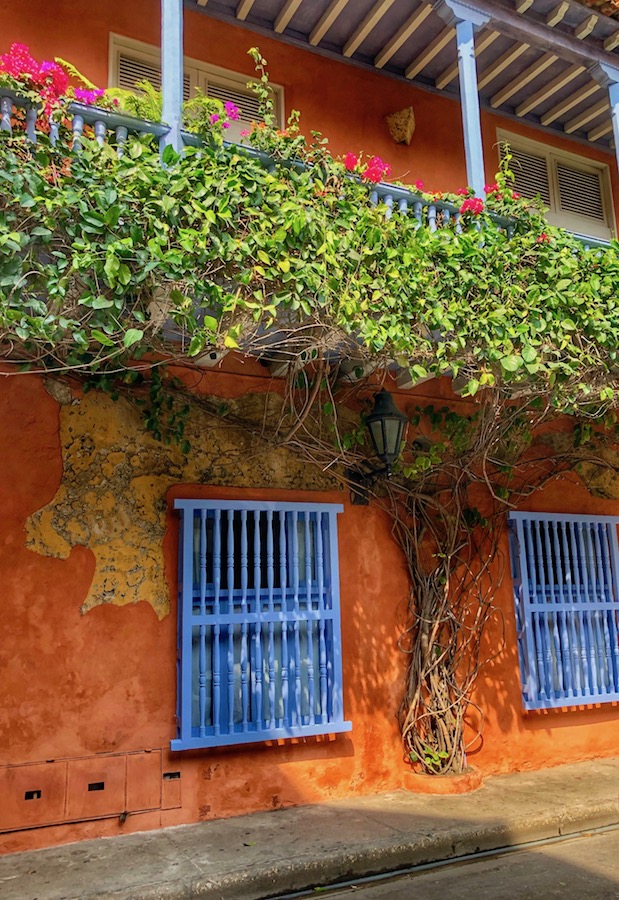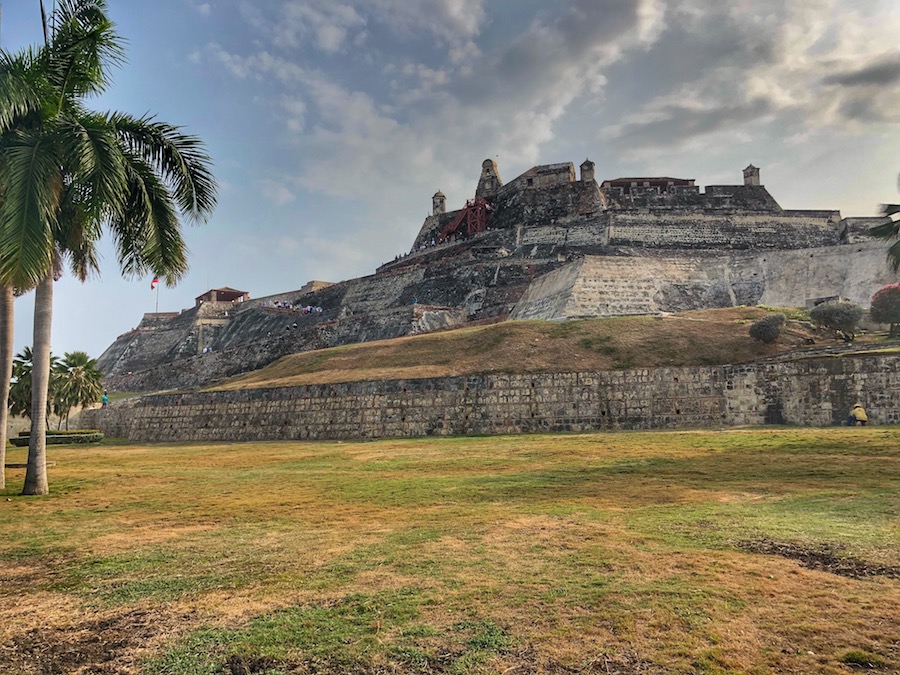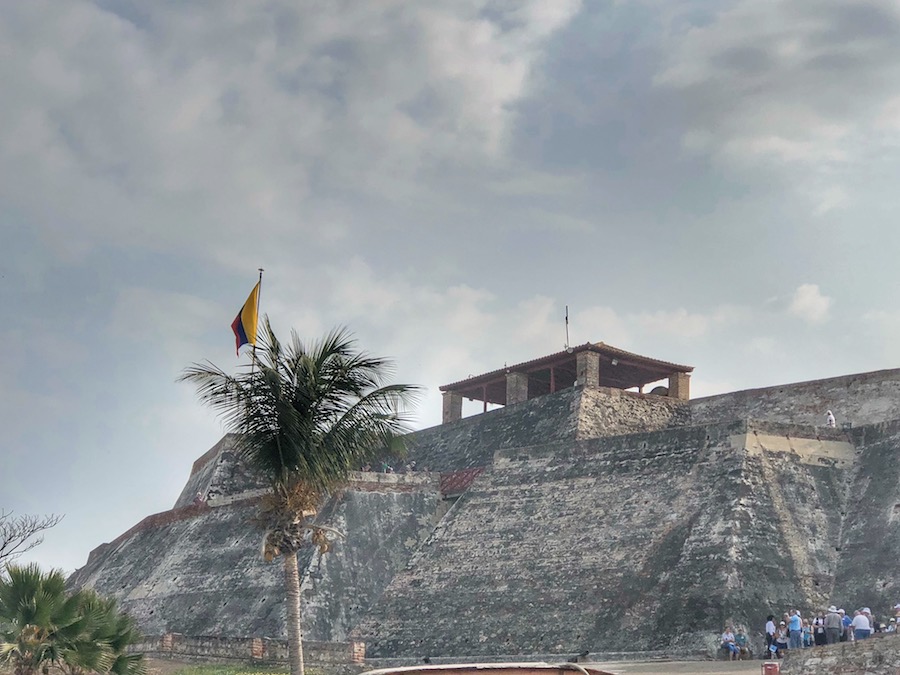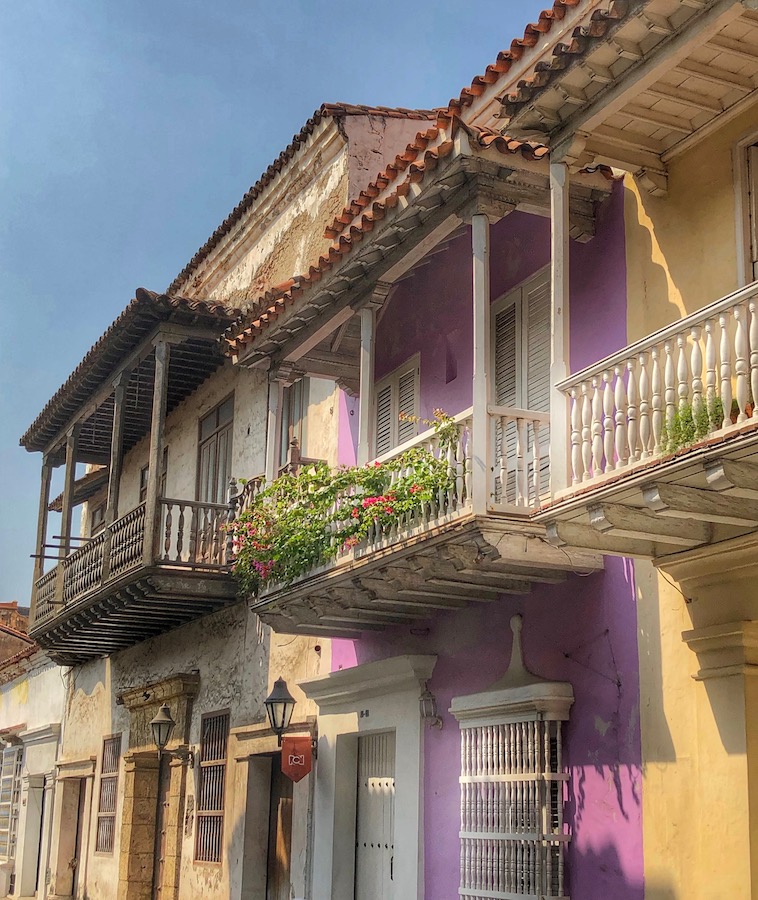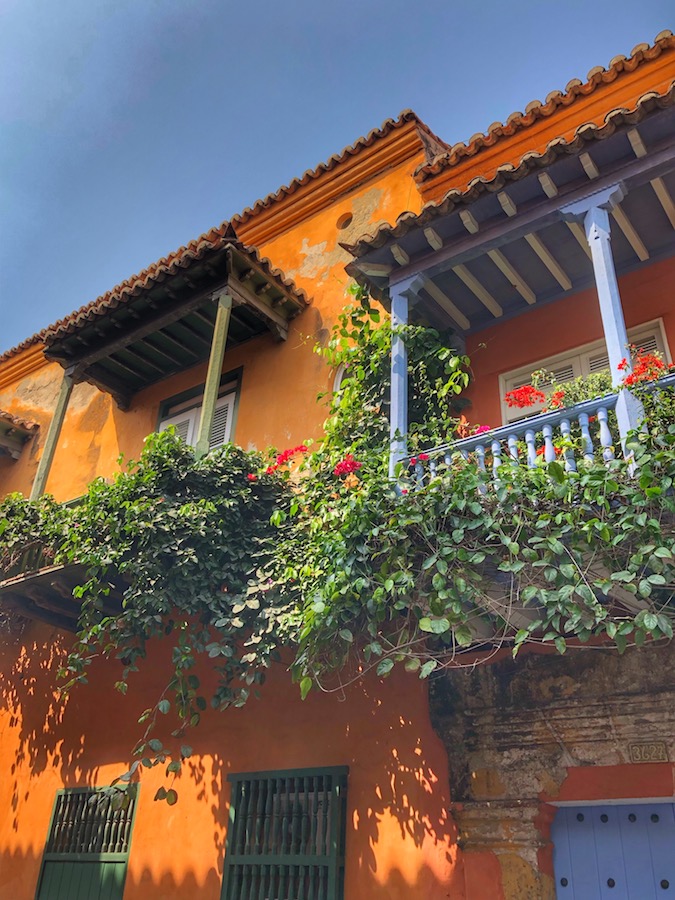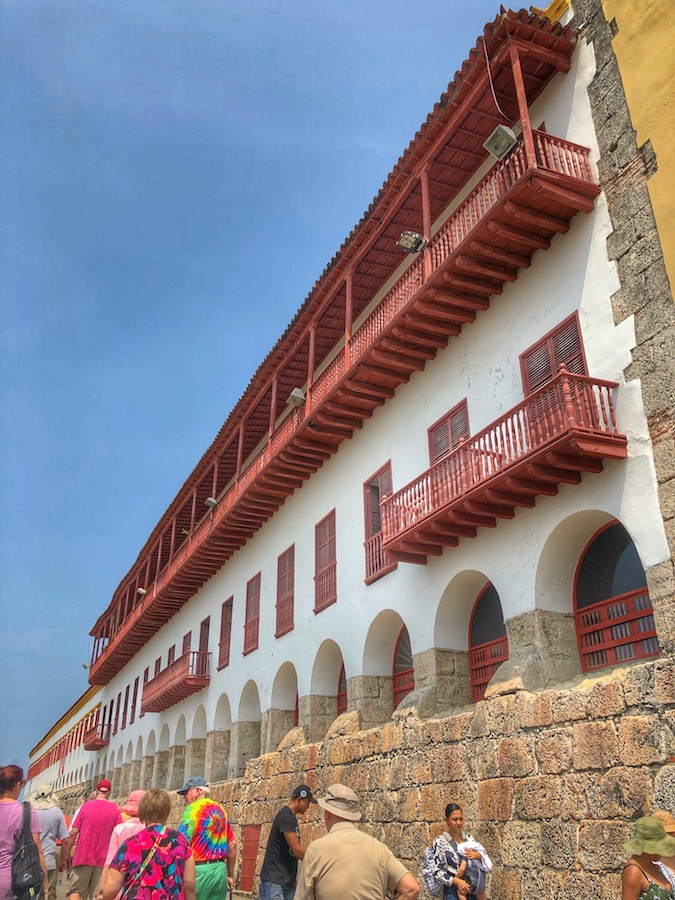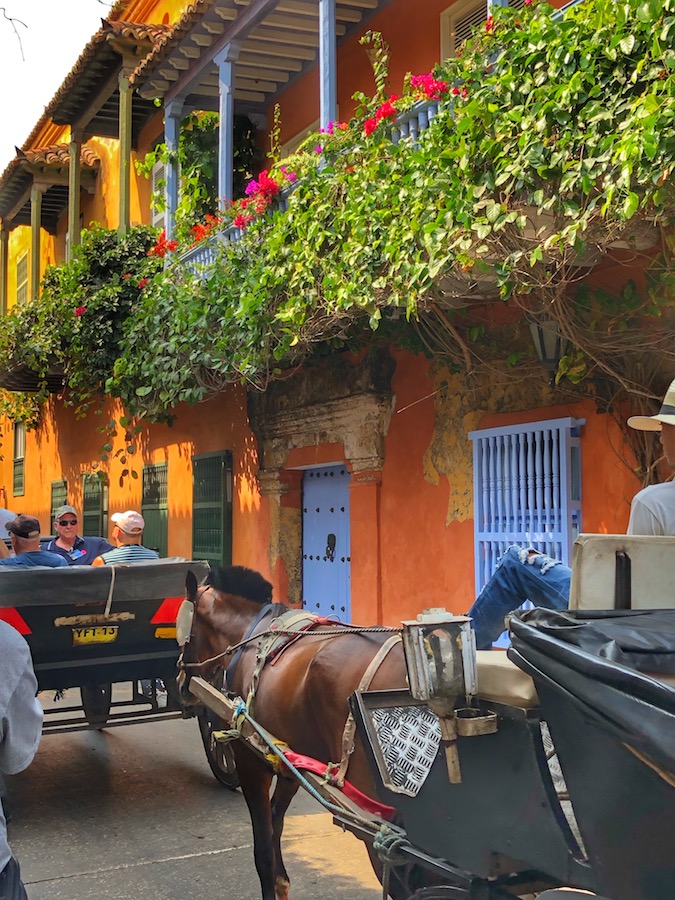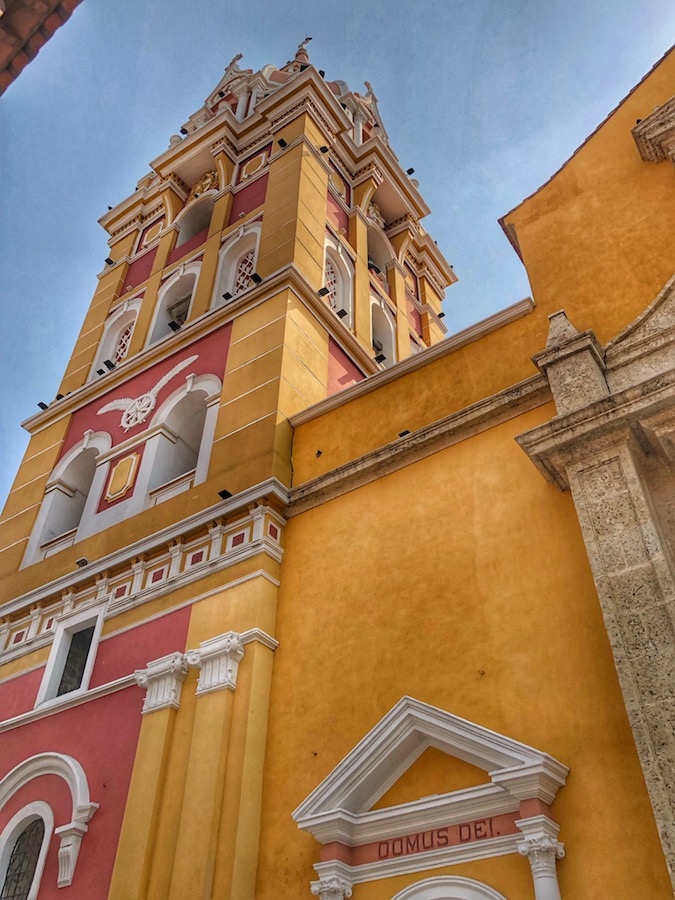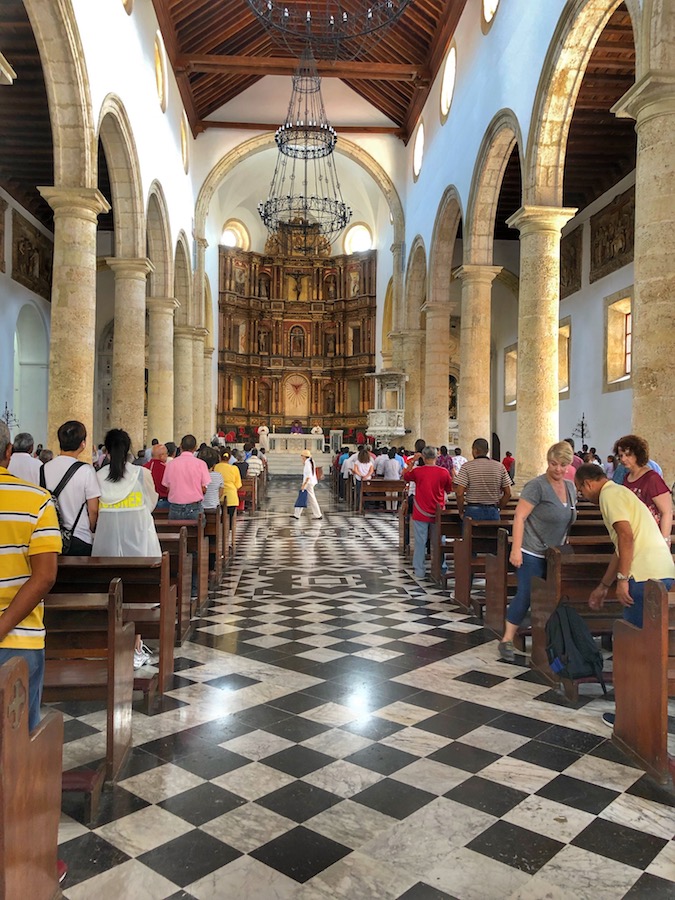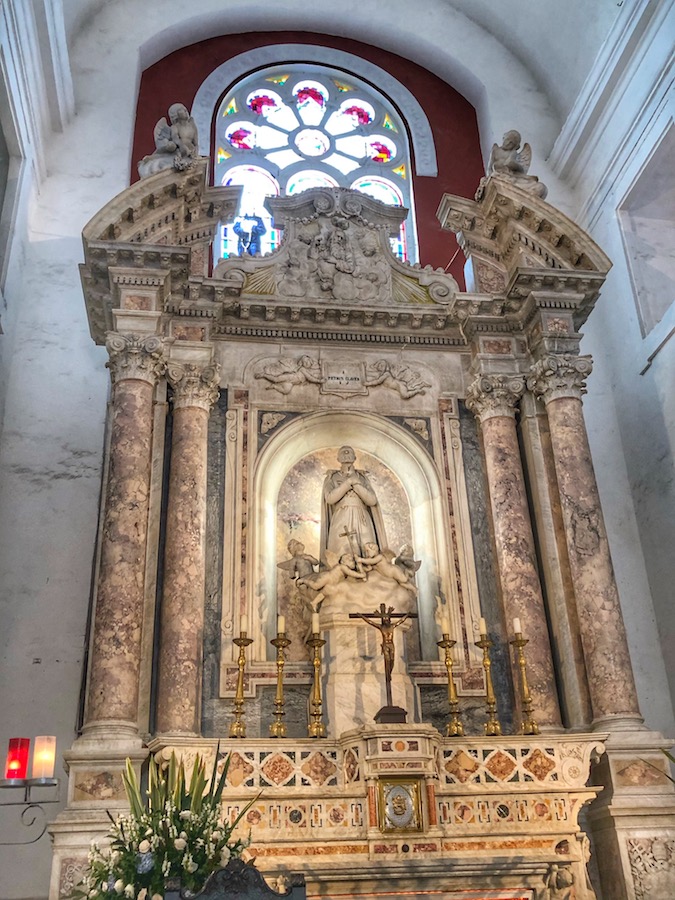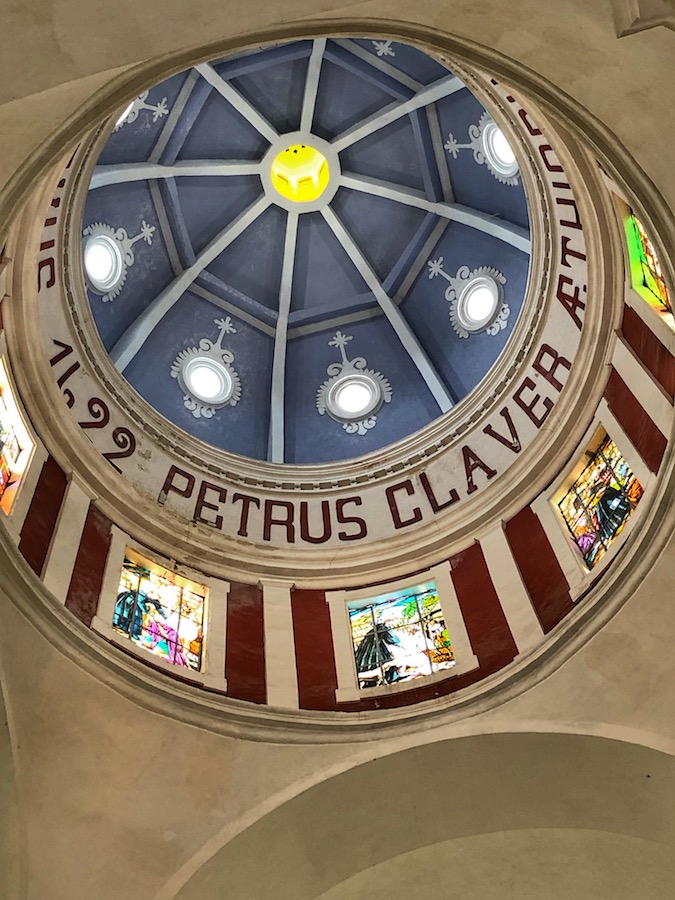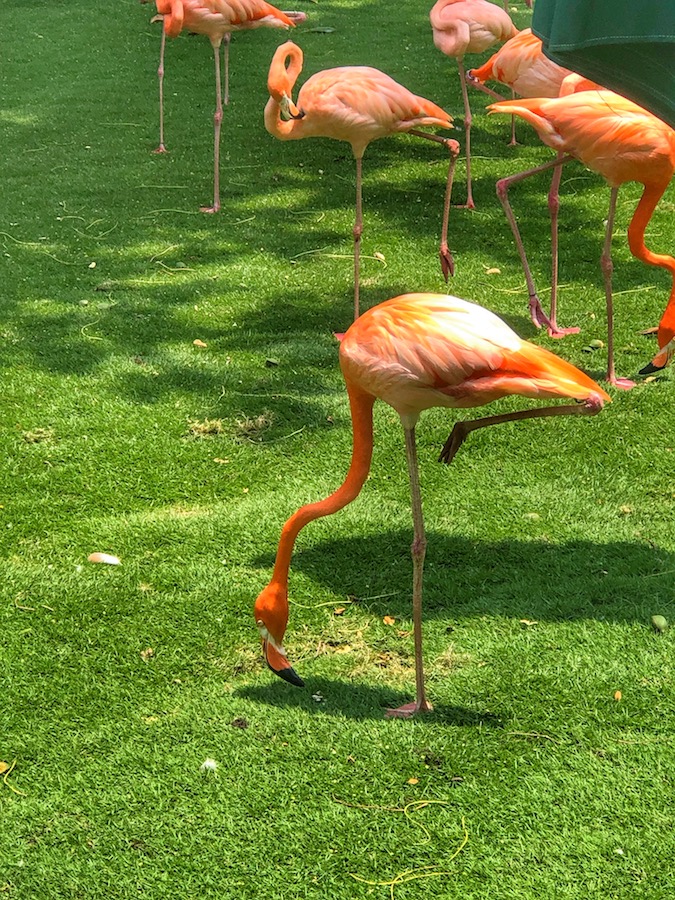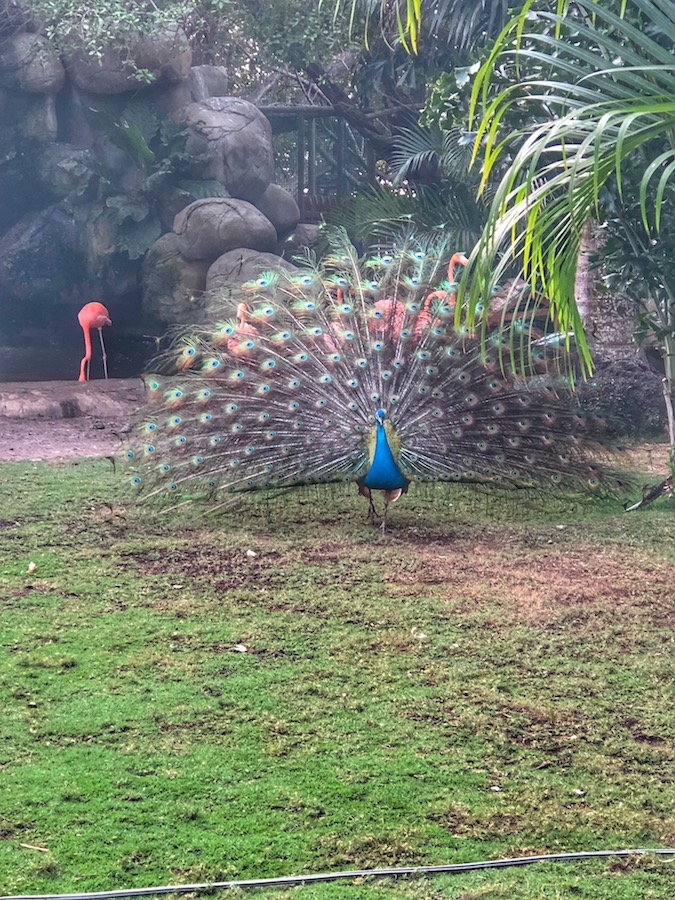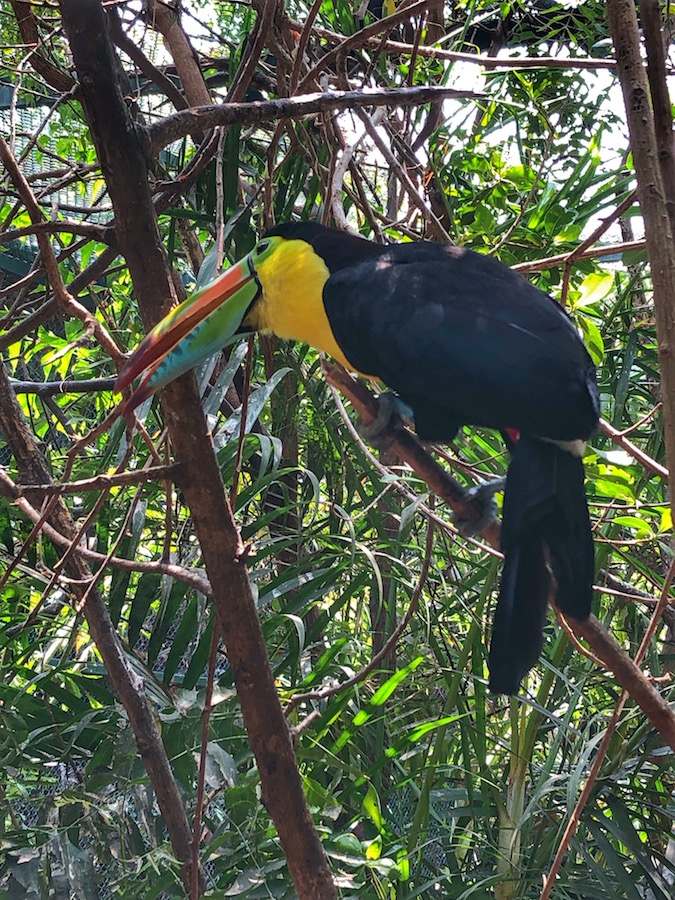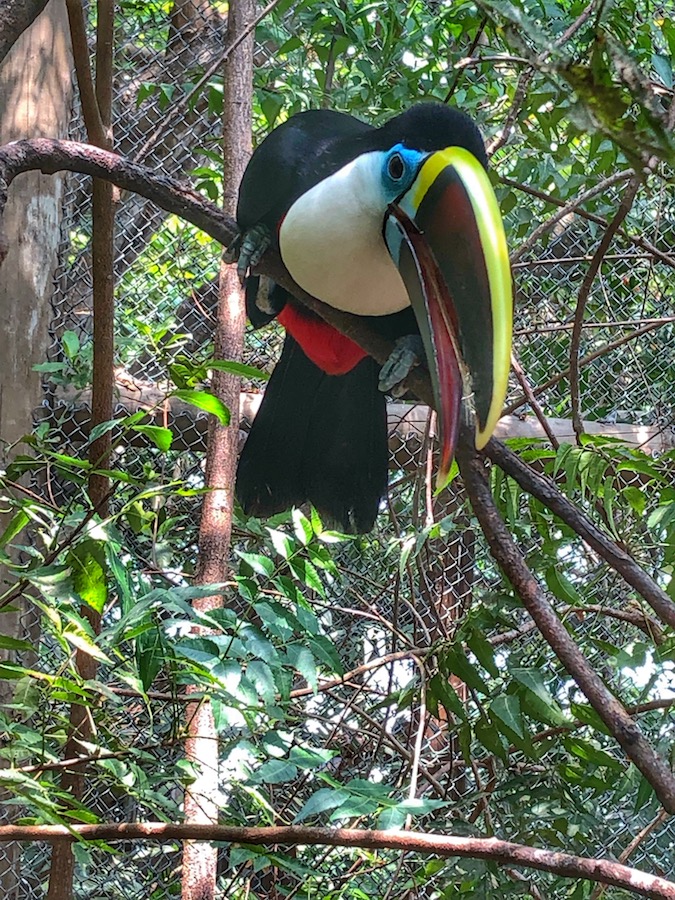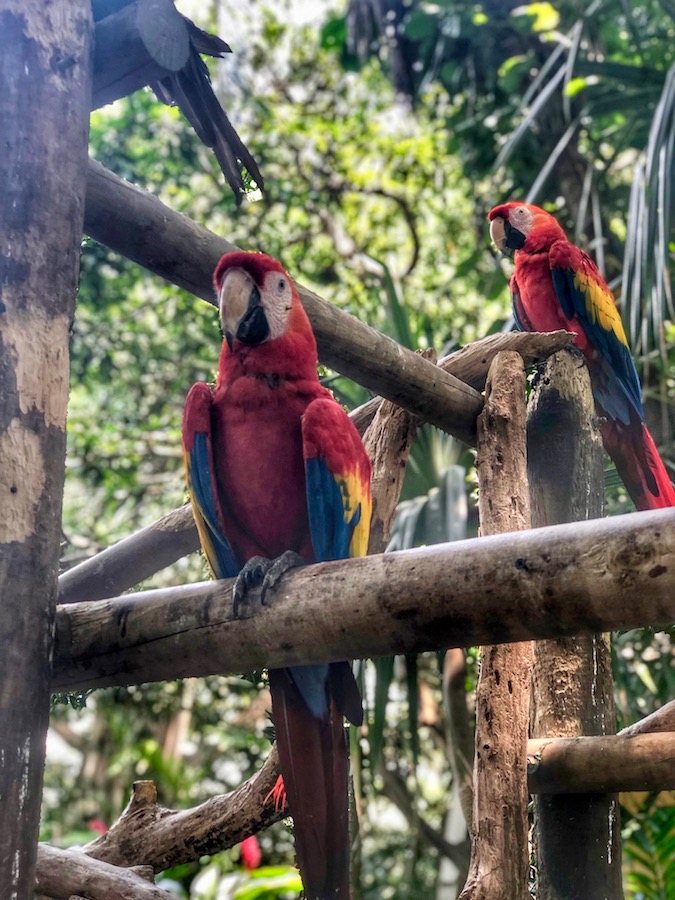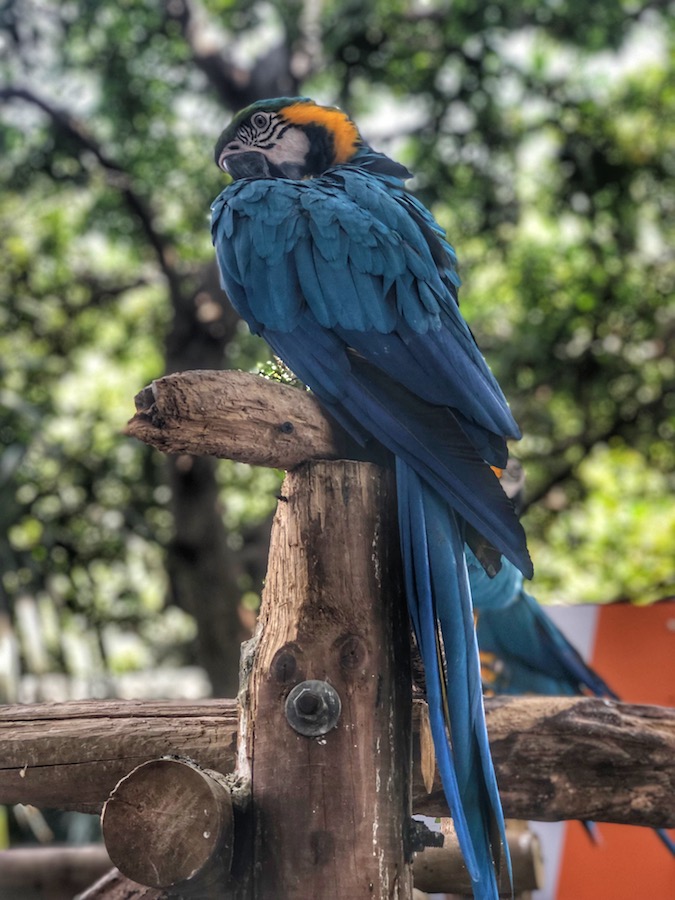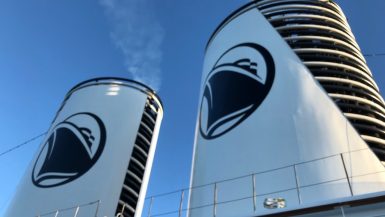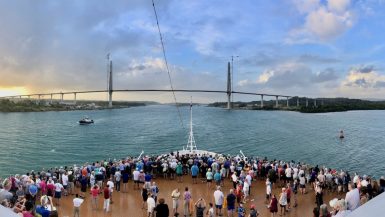March 6, 2019
I worried a little about our shore excursion in Cartagena because I did not book it directly through Holland America.
Upon disembarking, we wandered away from the ship toward the port terminal in hopes someone was holding a sign we recognized. We had “the look” because a woman approached and said, “I think you are with me.” Joan’s name was on her little sign. Following her to the terminal like lost sheep, she left us after plopping stickers on our chests that said “Benny.” “Now you belong to Benny” she said, and left. Hmmm, should we be worried?
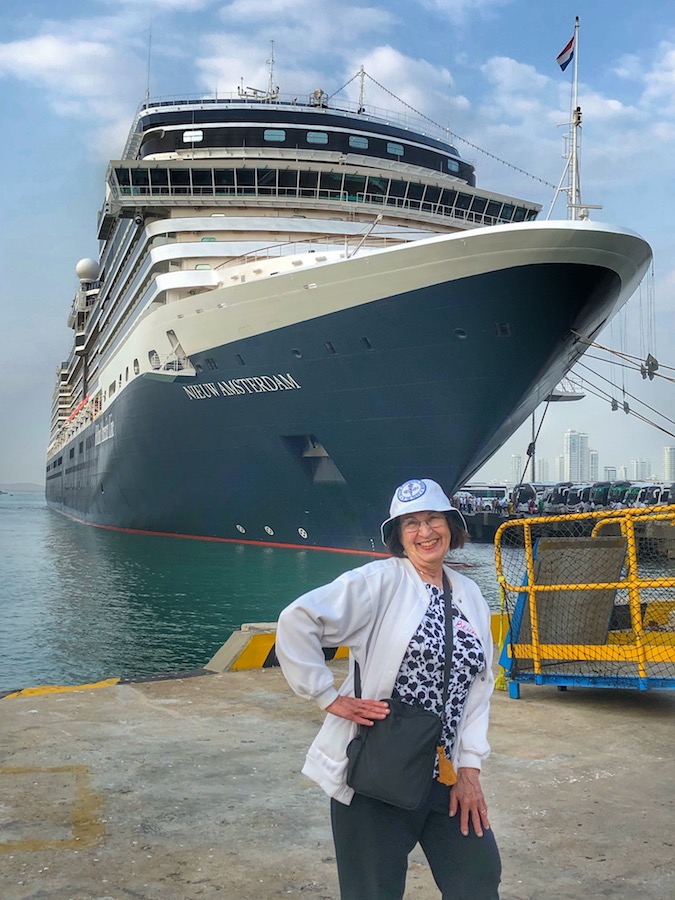
Benny, as it turned out, was a gentleman in his early 60s. He has 44+ years of experience as a tour guide in Cartagena. He knows everything about Cartagena (although he couldn’t identify the most popular grocery store because that’s his wife’s domain). Benny also seems to know everyone in Cartagena. “If you get lost, tell a policeman or storekeeper you are with Benny, and they will know where to find me.” That’s confidence.
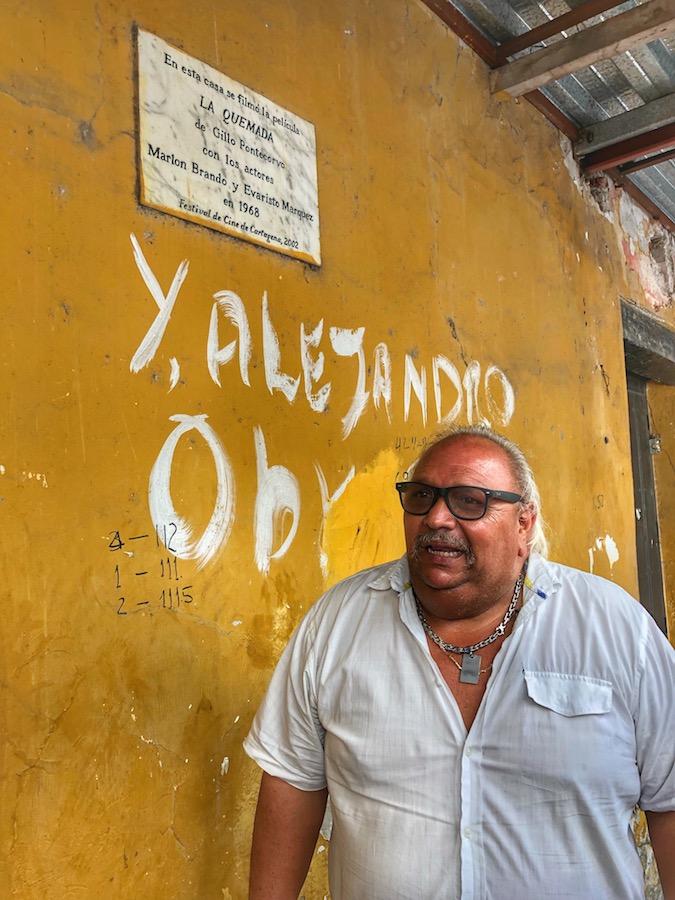
Cartagena, like many South American cities, has an old town and a new town. The old town is walled and dominated by the Castillo de San Felipe de Barajas, built by the Spanish in colonial times.
Cartagena was Spain’s storehouse for the gold, silver, emeralds and other natural resources “borrowed” from the New World. They only shipped their riches twice a year. During the remainder of the year, the mighty fortress defended their new found wealth from pirates. Aaarrr, matey!!
The shiny section of the new town is Bocagrande, filled with skyscraper hotels, apartments, and condominium complexes. Benny estimated a new 3-bedroom apartment/condo rents for $1,200 to $1,500 per month plus utilities. So, $2,000 per month allows you to live well. Hmmm, it is a wonder why Cartagena has a large expat community.
Much of the architecture in the old town is colonial ~ there are wooden balconies festooned with bougainvillea of every color imaginable. Cartagena even has the world’s second longest balcony in the world (the largest is in Peru). The streets are narrow and made of cobblestone (watch out for turned ankles) – but, not too narrow for quaint horse-drawn carriages.
It’s hot in Cartagena. It was 85 degrees with 95% humidity at 9:30 a.m. Benny recommended we not come in September when it is over 100 degrees and over 100% humidity. (Over 100% humidity – does it rain within the rain?). Everyone carries a handkerchief to wipe away the omnipresent glow.
Cartagena is a very clean city. Trash is picked up twice a day, once in the morning and once in the evening. Probably a good thing in the heat.
It is also a clean energy city as it practically runs on natural gas. 88% of the vehicles run on natural gas; all the homes have appliances that run on natural gas. Colombia actually has a reserve of natural gas targeted to last in excess of 140 years. Despite the level of their natural resources, Benny complained that the current price of natural gas for his car was $1.70 per gallon. It’s typically half that amount.
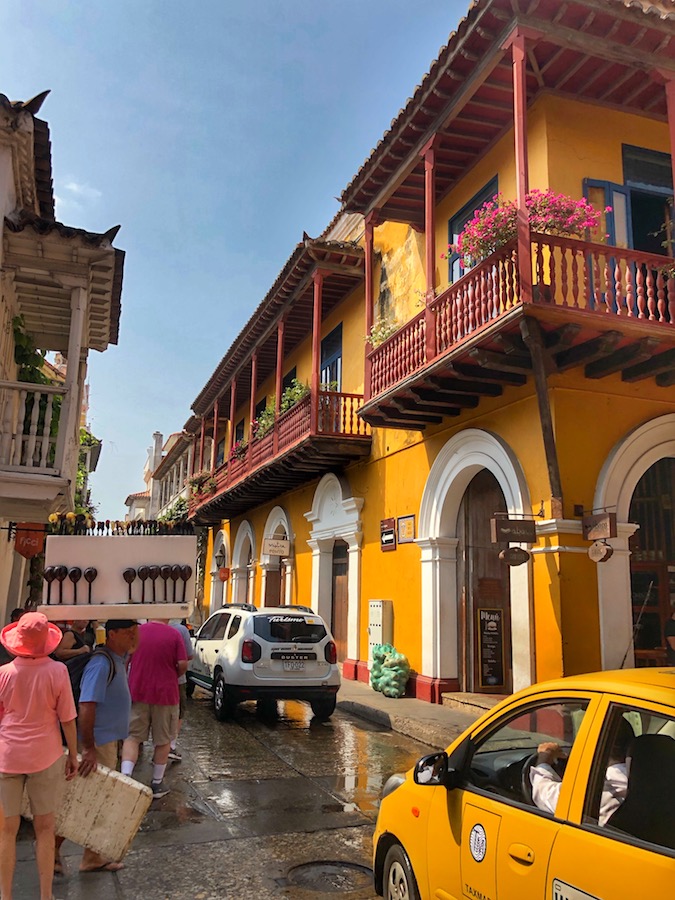
According to Benny, the primary problem in Colombia is the educational system. There is no requirement children attend school; therefore, in the past, Colombia had a relatively uneducated population. Within the last 10 years, however, the percentage of school-age children attending school rose from 41% to 96%. The current President, Ivan Marquez, understands children are his country’s future.
We arrived in Cartagena on Ash Wednesday. 75% of the population is Catholic, 15% is Protestant, and the remainder is divided among various religions and non-believers. Each church we visited was full to capacity. We were lucky to stand in the back in one listening to a portion of mass. The warmth of the congregation filled my heart.
After a whirlwind, but educational tour of Cartagena (we were only in port 5 1/2 hours), Benny and his driver returned us to the port terminal. Prior to leaving on the tour, we saw several flamingoes, macaws, and a few peacocks in the terminal gardens.
Upon closer inspection on our return, we found a wonderful aviary with all kinds of exotic birds of flight, water foul, and a few animals (anteaters and monkeys). If you come through the port, don’t miss a walk through the aviaries. There’s nothing like toucans and macaws flying over and around you. One macaw even took a liking to my hat.
All too soon, we left Cartagena. We spent the rest of our afternoon and early evening as any good cruise day should ~ a little food, a little nap, a little relaxing, and then a little more food.
The evening entertainment was a great group called the Knights. They sang medleys of songs written, produced, or performed by artists knighted by the queen. I’m particular about my music, but they surpassed my expectations of ship songsters. With our fill of toe-tapping toons, we sauntered back to our room, only to find an elephant on the bed. Oh, what they do with a hand towel!
